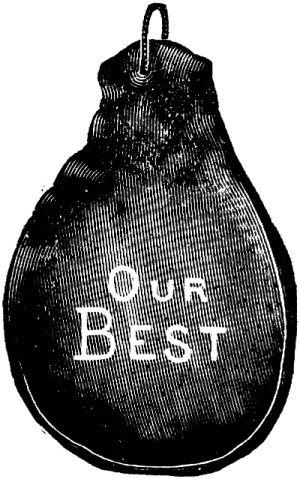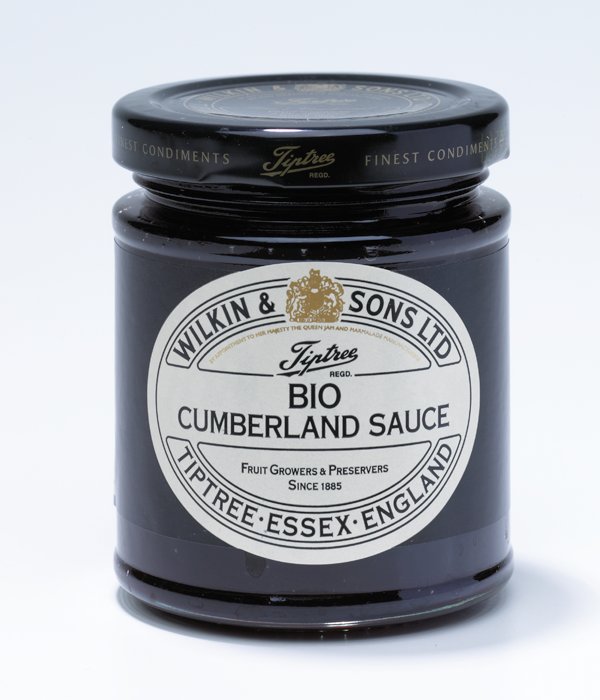Baked Ham with Cumberland Sauce
Serves a crowd
You need half of a good, big cured ham on the bone for this because the recipe is designed to concentrate and emphasize the flavor of the ham. A poor quality ham will wind up tasting of salt and not much else. It will also get mushy. If you use a good ham, however, this is an easy and delicious preparation for a crowd. Accompanied by boiled new potatoes and Brussels sprouts, you have a traditional winter hunt lunch that makes a festive holiday dinner party. The only other thing you will need besides lots of good Riesling is some Cumberland Sauce (see notes).
 - ½ ham on the bone, about 10 – 14 lbs (the exact size does not change the recipe)
- ½ ham on the bone, about 10 – 14 lbs (the exact size does not change the recipe)
- 2-3 Tablespoons flour, depending on the size of your ham
- enough water – just enough – to make a sticky paste with the flour; the amount varies
- whole cloves (optional)
- golden syrup, treacle or molasses
- hot sauce, cayenne or dry mustard
- brown sugar (very approximately a cup)
Preheat the oven to 300°
- Mix the flour with enough water (less than you think, usually no more than 1 ½ - 2 cups) to make a sticky paste. Do not add salt or shortening: The crust will be discarded.
- Divide the dough in half. Roll out one half of it on a generously floured board (generously flour the dough itself too, to discourage sticking) until the dough has the same rough contours as the cut side of the ham but is about 2 inches bigger all around.
- Put the rolled out paste in a lightly oiled roasting pan and place the ham, cut side down, on the paste.
- Stud the top of the ham at one-inch intervals with the cloves (if you are using them; some people do not like cloves), then pour enough syrup over the ham so it coats the top and runs down the sides a little. Sprinkle the ham generously with hot sauce, cayenne or mustard, then press enough brown sugar over the top to form an even layer about ¼” thick on top of the ham.
- Roll out the remaining half of the paste until its circumference is a little bigger than the top of the ham. Pull the pastry down over the ham and then fold the bottom layer of pastry up around the ham to connect with the top layer and form a seal.
- Bake the ham for three hours; if it starts to blacken, tent it with foil.
- Once the pastry cools, peel it away from the ham. Throw the pastry away and carve the ham in very thin slices.
Notes:
- I also like to glaze this ham with some dark, bitter marmalade thinned with a little Guinness and spice with dry mustard and cayenne.
 - Cumberland sauce is delicious with ham, cold birds and cold cuts generally. Every author seems to have her own recipe. Some include meat stock and a white roux but most omit the stock and thicken the sauce only by reduction. All of them include redcurrant jelly, Port and citrus. The Editor’s version, which you can double, takes 8 ounces of redcurrent jelly, 2 oranges and a lemon, 2 shallots, a good Tablespoon of minced ginger, ½ teaspoon of powdered ginger, 2 teaspoons of dry mustard, a Tablespoon of unsalted butter, about a cup of tawny Port and black pepper. Melt the jelly in a double boiler, peel the citrus and reserve the juice. Cut the peel into razor thin matchsticks and boil them for about 5 minutes and add them to the reserved juice to stop their cooking. Mince the shallots and heat them in the unsalted butter with the fresh ginger over low heat until the shallots soften but do not brown. Add the juice, peel and mustard, increase the heat and boil hard until the mixture thickens to a syrup. Add the Port, reduce everything until it re-thickens, then add some turns of fresh pepper and whisk in the melted jelly. Let the sauce cool before serving.
- Cumberland sauce is delicious with ham, cold birds and cold cuts generally. Every author seems to have her own recipe. Some include meat stock and a white roux but most omit the stock and thicken the sauce only by reduction. All of them include redcurrant jelly, Port and citrus. The Editor’s version, which you can double, takes 8 ounces of redcurrent jelly, 2 oranges and a lemon, 2 shallots, a good Tablespoon of minced ginger, ½ teaspoon of powdered ginger, 2 teaspoons of dry mustard, a Tablespoon of unsalted butter, about a cup of tawny Port and black pepper. Melt the jelly in a double boiler, peel the citrus and reserve the juice. Cut the peel into razor thin matchsticks and boil them for about 5 minutes and add them to the reserved juice to stop their cooking. Mince the shallots and heat them in the unsalted butter with the fresh ginger over low heat until the shallots soften but do not brown. Add the juice, peel and mustard, increase the heat and boil hard until the mixture thickens to a syrup. Add the Port, reduce everything until it re-thickens, then add some turns of fresh pepper and whisk in the melted jelly. Let the sauce cool before serving.
- According to both Elizabeth David and Jane Grigson (citing David), Cumberland sauce does not appear in print until the twentieth century and the origins of this quintessentially British sauce are obscure but probably German. If so, the British have made it as their own. In any event picquant sauces using fortified wine, and the use of fruit jellies to thicken game sauces and pies, seem British to us.
- The Editor likes this method of cooking ham because it combines the best features of baking and boiling the meat. It steams inside the pastry shell without the dilution of hammy flavor that can result from boiling. On the other hand, boiling a ham also is a wonderful thing; I prefer to boil a fresh rather than cured or smoked one with lots of root vegetables and Savoy cabbage, except that we always boil the little smoked daisy hams readily available in supermarkets and absolutely delicious. The preparations are simple but deserve their own recipes, which follow so that you do not overlook them.

